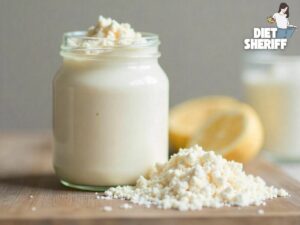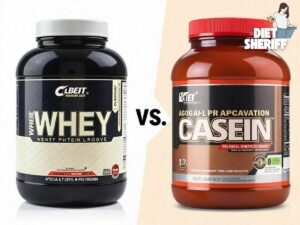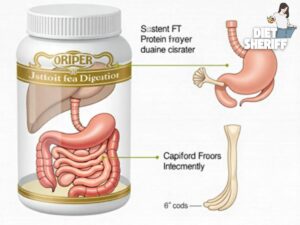Can Protein Powder Cause Headaches? The answer is YES.
While protein powder is a popular supplement among athletes and health enthusiasts, some individuals report experiencing headaches after consuming it. This can be a puzzling and frustrating side effect, especially for those seeking to enhance their nutrition and fitness regimen.
Understanding the reasons behind these headaches can help in managing or preventing them.

Understanding the Connection Between Protein Powder and Headaches
Protein powder is a popular supplement used by athletes, fitness enthusiasts, and individuals looking to increase their protein intake. While generally considered safe, some individuals report experiencing headaches after using protein powder. Here’s a breakdown of potential reasons why this might occur:
- Allergy to Whey Protein
Whey protein is the most commonly used protein in many protein powder drinks.
If someone is allergic to whey protein, they may experience headaches every time they consume it.
Recommendation
Those with a known allergy to whey protein should avoid it and consider alternative protein sources like pea or rice protein.
- Monosodium Glutamate (MSG)
Related Articles: How Protein Shakes Help with Hunger?
MSG is often used to enhance flavor in pre-mixed drinks and processed foods, including some meal replacement shakes and protein powders.
Individuals sensitive to MSG may experience headaches after consuming products containing it.
Recommendation
Check labels and avoid protein powders that list MSG or other flavor enhancers.
- Additives and Preservatives
Certain additives and preservatives in protein powders can cause adverse reactions.
People sensitive to these chemicals may experience headaches.
Recommendation
Opt for protein powders that are low in additives and artificial sweeteners to minimize the risk of headaches.
- Dehydration
Protein metabolism requires water, and consuming protein powder without adequate hydration can lead to dehydration.
Dehydration is a common trigger for headaches.
Recommendation
Ensure proper hydration while consuming protein powder to help reduce the likelihood of experiencing headaches.
Related Articles: Protein Powders with No Artificial Sweetener – Quick Tips
General Sensitivity
Some individuals may be more susceptible to headaches due to specific ingredients or sensitivities.
While not a common side effect, certain people may experience headaches after consuming protein powder.
Recommendation
Monitor your body’s response to different protein powders and choose those that don’t trigger headaches.
Managing and Preventing Headaches from Protein Powder
Here are some tips on how to effectively manage and prevent headaches from protein powder:
- Identify the Cause:
Start by determining the specific cause of your headaches. Consider factors such as allergies, sensitivities, dehydration, or other underlying health conditions. Keeping a food diary can help identify patterns and potential triggers.
- Choose High-Quality Protein Powders:
Opt for high-quality protein powders that are free from additives, preservatives, and artificial sweeteners. Look for products that have undergone third-party testing for quality and purity. This can help reduce the risk of headaches caused by chemical additives.
- Check for Allergens
If you suspect an allergy to whey protein, consider switching to alternative protein sources such as soy, hemp, pea, or rice protein powders. These options may be better tolerated by individuals with whey protein allergies.
- Stay Hydrated:
Proper hydration is crucial when consuming protein powder. Dehydration can trigger headaches, so make sure to drink an adequate amount of water throughout the day. Aim for at least 8 cups (64 ounces) of water daily, or more if you engage in intense physical activity.
- Gradually Increase Protein Intake:
Sudden increases in protein intake can sometimes lead to headaches. Gradually increase your protein intake over time to allow your body to adjust. This can help minimize the likelihood of experiencing headaches.
- Consider Meal Timing:
Some individuals may experience headaches if they consume protein powder on an empty stomach or close to other meals. Experiment with different meal timings to see what works best for you. For example, you may find it helpful to consume protein powder as part of a balanced meal or snack.
- Monitor Caffeine Intake:
Be mindful of your caffeine intake if you’re using protein powder as part of a pre-workout routine. Excessive caffeine consumption can contribute to headaches. Consider reducing or eliminating other sources of caffeine to see if it improves your symptoms.
- Consult with a Healthcare Provider:
If you continue to experience persistent headaches despite making adjustments, it is important to seek advice from a healthcare provider. They can help evaluate your symptoms, rule out any underlying conditions, and provide personalized recommendations based on your specific situation.
Related Articles: Is a Protein Shake Good For Weight Loss?
Alternatives to Traditional Protein Powders
Here, are two viable options: whole-food protein sources and DIY protein shakes.
Source 1: Whole Food Protein Sources
Whole foods offer a natural and often more nutritious way to increase protein intake. They provide not only protein but also essential vitamins, minerals, fiber, and other nutrients that are often lost during the processing of protein powders. Here are some excellent whole-food sources of protein:
- Lean Meats and Poultry
Chicken Breast: Approximately 31 grams of protein per 100 grams.
Turkey: Similar protein content to chicken, with the added benefit of being low in fat.
- Fish and Seafood
Salmon: About 25 grams of protein per 100 grams and healthy omega-3 fatty acids.
Tuna: Around 30 grams of protein per 100 grams, making it a protein powerhouse.
- Eggs
Whole Eggs: About 6 grams of protein per egg, along with essential fats and nutrients.
Egg Whites: Approximately 3.6 grams of protein per egg white, with minimal calories and fat diet sheriff.
Related Articles: Can You Put Protein Powder in Coffee?
- Dairy Products
Greek Yogurt: Contains around 10 grams of protein per 100 grams, along with probiotics.
Cottage Cheese: Offers about 11 grams of protein per 100 grams, low in fat versions available.
- Legumes and Beans
Lentils: Approximately 9 grams of protein per 100 grams, high in fiber and iron.
Chickpeas: About 19 grams of protein per 100 grams, versatile for various recipes.
- Nuts and Seeds
Almonds: Provide around 21 grams of protein per 100 grams, plus healthy fats.
Chia Seeds: Contain about 17 grams of protein per 100 grams, also rich in omega-3s.
- Whole Grains
Quinoa: Approximately 8 grams of protein per cup cooked, a complete protein source.
Brown Rice: Contains about 5 grams of protein per cup cooked, good for energy and fiber.
Source 2: DIY Protein Shakes
Creating your own protein shakes at home allows you to control the ingredients, avoid additives, and tailor the shake to your taste and nutritional needs. Here are some recipes and tips for making nutritious DIY protein shakes:
Basic Protein Shake
Ingredients:
- 1 cup of milk (dairy or plant-based)
- 1 banana
- 2 tablespoons of natural peanut butter
- 1 tablespoon of chia seeds
Instructions:
- Combine all ingredients in a blender.
- Blend until smooth.
- Serve immediately.
- Green Protein Shake
Berry Blast Protein Shake
Ingredients:
- 1 cup of mixed berries (strawberries, blueberries, raspberries)
- 1 cup of Greek yogurt
- 1 tablespoon of flaxseeds
- 1 tablespoon of honey (optional)
Instructions:
- Add all ingredients to a blender.
- Blend until smooth.
- Pour into a glass and drink immediately.
- Chocolate Protein Shake
Explore Also:
Creativehouseblog
Gigasecurehome
Mycleanseplan
Tips for DIY Protein Shakes
- Choose High-Quality Ingredients: Opt for organic produce, unsweetened nut butters, and natural sweeteners like honey or dates.
- Balance Your Macros: Ensure your shake includes a good mix of protein, healthy fats, and carbohydrates for a well-rounded nutritional profile.
- Experiment with Flavors: Add spices like cinnamon or vanilla extract to enhance flavor without extra calories.
- Prep Ahead: Freeze fruits and vegetables in portions for quick and easy blending.





